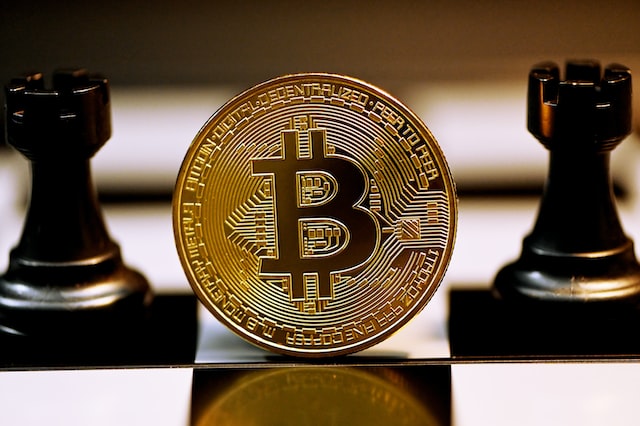Blockchain Beyond Crypto: Real-World Fintech Applications in 2025

Introduction
Blockchain is not just for Bitcoin. It has many real-world uses in fintech.
Banks and financial companies are using blockchain for secure transactions. It helps with payments, contracts, and identity checks.
In this article, we will explore how blockchain is changing fintech. We will look at real examples. Let’s begin.
1. What is Blockchain?
Blockchain is a digital ledger. It records transactions securely.
Key Features of Blockchain
✔ Decentralized – No single company controls it.
✔ Transparent – All users can see transactions.
✔ Secure – Hard to hack or change data.
Blockchain is best known for cryptocurrencies. But it does much more.
2. Smart Contracts: Faster, Cheaper Agreements
Smart contracts are self-executing deals. They run on blockchain.
How Do Smart Contracts Work?
- They automatically enforce rules.
- No lawyers or middlemen are needed.
- Payments release when conditions are met.
Benefits of Smart Contracts
✅ Saves time – No paperwork delays.
✅ Reduces costs – No middlemen fees.
✅ Prevents fraud – Terms cannot be changed.
Real-World Example: Ethereum
Ethereum is a blockchain platform. It lets businesses create smart contracts. Many companies use it for supply chain deals.
3. Cross-Border Payments: Faster and Cheaper
Sending money abroad is slow and expensive. Blockchain makes it easier.
How Does Blockchain Improve Payments?
- Transactions settle in minutes, not days.
- Fees are lower than traditional banks.
- Works 24/7 – No banking hours delays.
Benefits of Blockchain Payments
✅ Speed – Money arrives fast.
✅ Cost – Lower fees than banks.
✅ Access – Works for everyone, even without a bank account.
Real-World Example: Ripple (XRP)
Ripple helps banks send cross-border payments. It uses blockchain to make transfers cheaper and faster.
4. Digital Identity Verification
Proving identity online is hard. Blockchain makes it secure and simple.
How Does Blockchain Verify Identity?
- Users store their ID on the blockchain.
- Companies can check it without storing personal data.
- Reduces identity theft risk.
Benefits of Blockchain ID
✅ Security – No central database to hack.
✅ Privacy – Users control who sees their data.
✅ Convenience – No need to upload documents repeatedly.
Real-World Example: Microsoft’s ION
Microsoft uses blockchain for digital IDs. Users can log in securely without passwords.
5. Supply Chain Tracking
Businesses need to track products. Blockchain helps with transparency.
How Does Blockchain Track Goods?
- Every step is recorded on the blockchain.
- Buyers can check where products come from.
- Reduces fraud in food, medicine, and luxury goods.
Benefits of Blockchain in Supply Chains
✅ Trust – Buyers know products are real.
✅ Efficiency – Faster tracking than paper records.
✅ Safety – Stops fake or unsafe products.
Real-World Example: IBM Food Trust
IBM uses blockchain to track food. Stores and customers can see where food comes from. This prevents fraud and contamination.
6. Decentralized Finance (DeFi)
DeFi is banking without banks. It runs on blockchain.
How Does DeFi Work?
- Users lend, borrow, and trade without middlemen.
- Smart contracts handle transactions.
- No need for a bank account.
Benefits of DeFi
✅ Access – Anyone with internet can use it.
✅ Control – Users own their money fully.
✅ Earnings – Higher interest than traditional banks.
Real-World Example: Aave
Aave is a DeFi platform. Users lend and borrow crypto without a bank. Interest rates update in real time.
7. Tokenization of Assets
Real-world assets (like real estate) can be turned into digital tokens.
How Does Tokenization Work?
- An asset is divided into blockchain tokens.
- Investors can buy small shares.
- Makes expensive assets more accessible.
Benefits of Tokenization
✅ Liquidity – Easier to buy and sell.
✅ Accessibility – Small investors can join.
✅ Transparency – Ownership is clear on blockchain.
Real-World Example: RealT
RealT tokenizes real estate. People can invest in properties with just $50.
8. Fighting Fraud with Blockchain
Fraud costs businesses billions. Blockchain helps stop it.
How Does Blockchain Prevent Fraud?
- Records cannot be changed secretly.
- Every transaction is verified by many computers.
- Fake transactions are nearly impossible.
Benefits of Blockchain Against Fraud
✅ Immutable records – No tampering.
✅ Audit trails – Easy to track suspicious activity.
✅ Trust – Customers know data is safe.
Real-World Example: Everledger
Everledger tracks diamonds on blockchain. This stops fake or stolen diamonds from being sold.
9. Central Bank Digital Currencies (CBDCs)
Governments are creating digital money using blockchain.
What Are CBDCs?
- Digital versions of national currencies (like digital dollars).
- Controlled by central banks.
- Faster and cheaper than cash.
Benefits of CBDCs
✅ Speed – Instant payments.
✅ Cost – Less expensive than printing cash.
✅ Financial inclusion – Helps people without bank accounts.
Real-World Example: Digital Yuan (China)
China is testing a digital yuan. It works like cash but on smartphones.
10. Challenges of Blockchain in Fintech
Blockchain is powerful but has problems:
❌ Scalability – Some blockchains are slow when busy.
❌ Regulation – Laws are still unclear in many places.
❌ Energy use – Some blockchains (like Bitcoin) use a lot of electricity.
Companies are working to fix these issues.
The Future of Blockchain in Fintech
Blockchain will keep growing. Here’s what to expect:
🚀 More banks using blockchain – For payments and contracts.
🚀 Better scalability – Faster and greener blockchains.
🚀 Wider adoption – From governments and big companies.
Blockchain is changing finance beyond crypto.
Conclusion
Blockchain is not just for Bitcoin. It helps with payments, contracts, and security.
Fintech companies are using blockchain to make finance faster and fairer. The future of money is being built on blockchain.
What do you think? Would you use blockchain for banking? Let us know in the comments!




